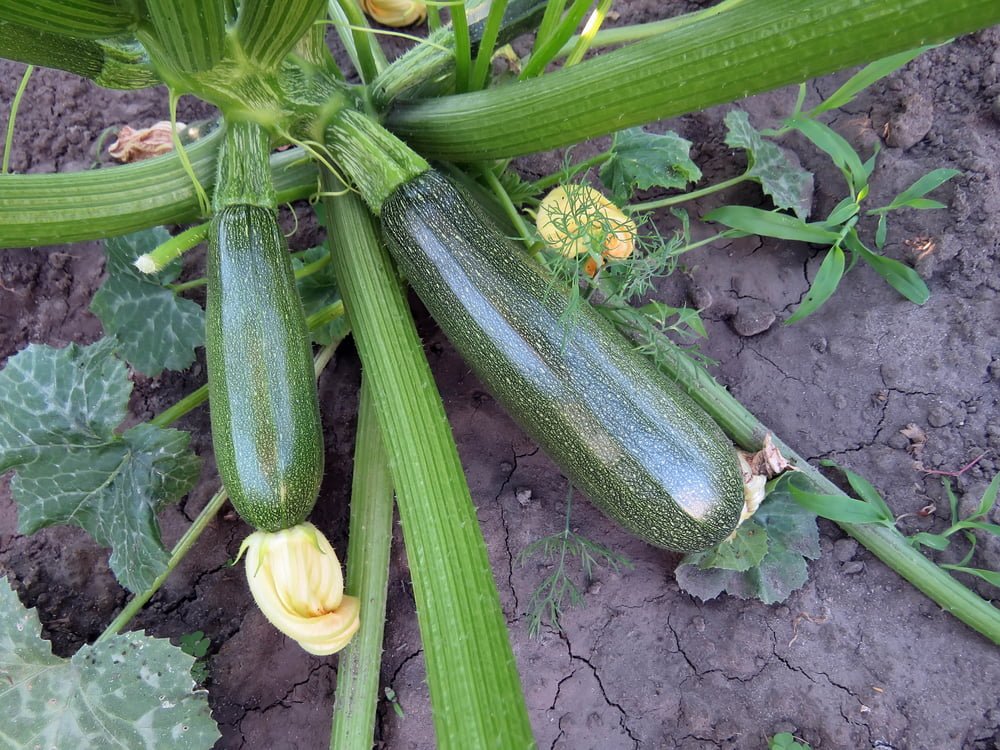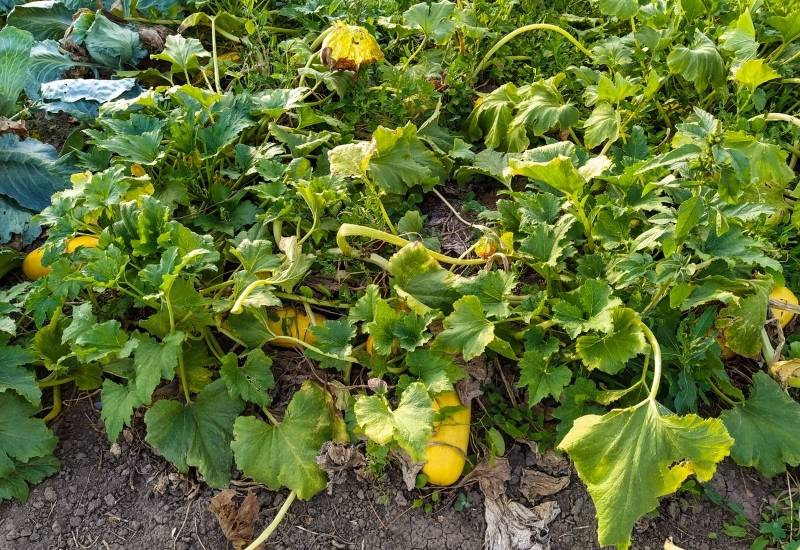You know that feeling of wanting to take extra care of your beloved zucchini plants, but sometimes, in your well-intentioned efforts, you may end up overwatering them. It happens to the best of us! In this article, we will explore the signs that indicate your zucchini plants might be getting a little too much H2O. By learning how to identify these signs, you can ensure the health and flourishing growth of your precious zucchinis, allowing you to become an even more successful and confident gardener. So, let’s dive into the fascinating world of overwatering and discover how to keep your zucchini plants in tip-top shape!
Signs of Overwatering in Zucchini Plants
Zucchini plants are a popular choice among gardeners due to their versatility and bountiful harvests. However, like any plant, zucchini can suffer from overwatering, which can have detrimental effects on their health and productivity. It’s important to be aware of the signs of overwatering in zucchini plants so that you can take appropriate action to prevent damage and ensure the success of your garden. In this article, we will explore the various signs to look out for when it comes to overwatering zucchini plants and provide helpful tips on how to address these issues.
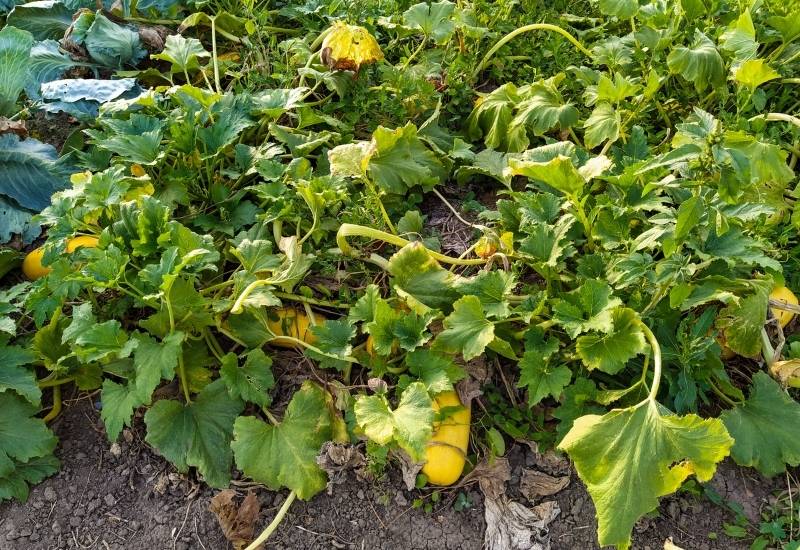
Wilting Leaves
One of the most noticeable signs of overwatering in zucchini plants is wilting leaves. When a zucchini plant receives excess water, the roots become saturated, making it difficult for the plant to absorb oxygen. As a result, the leaves may appear soft and limp, losing their usual turgidity. Unlike wilting from lack of water, these leaves do not regain their vitality even after watering.
Yellowing Leaves
Yellowing leaves are another common indication of overwatering in zucchini plants. Excessive moisture in the soil can lead to root damage, impairing the plant’s ability to absorb nutrients effectively. As a result, the older leaves of the zucchini plant may start to turn yellow. Additionally, new growth may exhibit the same yellowing, causing an overall decline in the plant’s health. It’s important to note that overwatering can also cause yellowing between the veins of the leaves, with the leaf edges turning brown.
Mold or Fungus
Overwatering creates an environment that favors the growth of mold and fungus on zucchini plants. Excessive moisture on the leaves and in the surrounding soil provides an ideal breeding ground for these harmful pathogens. Keep an eye out for the presence of mold or fungus on the leaves, which may appear as white powdery mildew or gray mold. These fungal infections can further weaken the plant and hinder its growth.
Stunted Growth
If your zucchini plants are not reaching their expected height or displaying limited leaf size, it could be a sign of overwatering. Excessive water in the soil can suffocate the roots, preventing them from receiving the necessary oxygen, nutrients, and water uptake. As a result, the plants may struggle to grow as expected and may fail to produce new shoots altogether. By addressing the overwatering issue, you can help promote healthier and more robust growth in your zucchini plants.
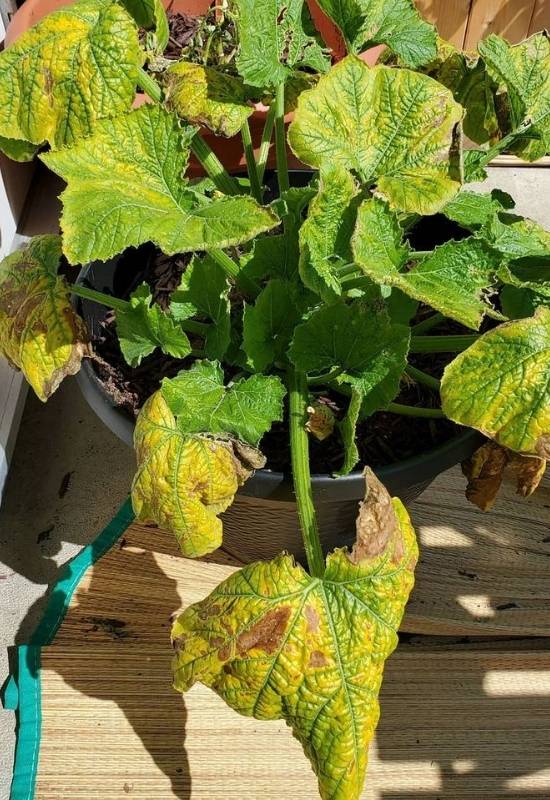
Leaf Drop
Another sign of overwatering in zucchini plants is the shedding of leaves, particularly in the early stages of growth. When the roots are consistently subjected to excess moisture, they can become weakened and develop conditions such as root rot. This can lead to the premature drop of leaves, affecting the overall vitality of the plant. Recognizing leaf drop as a symptom of overwatering is crucial in preventing further damage and promoting plant recovery.
Root Rot
Root rot is a severe consequence of overwatering in zucchini plants and can have detrimental effects on their health. Overly wet soil can promote the growth of harmful bacteria and fungi, causing the roots to rot. When examining the roots of an overwatered zucchini plant, you may observe brown and mushy roots, along with a foul odor. This condition inhibits proper nutrient absorption, further weakening the plant’s ability to thrive.
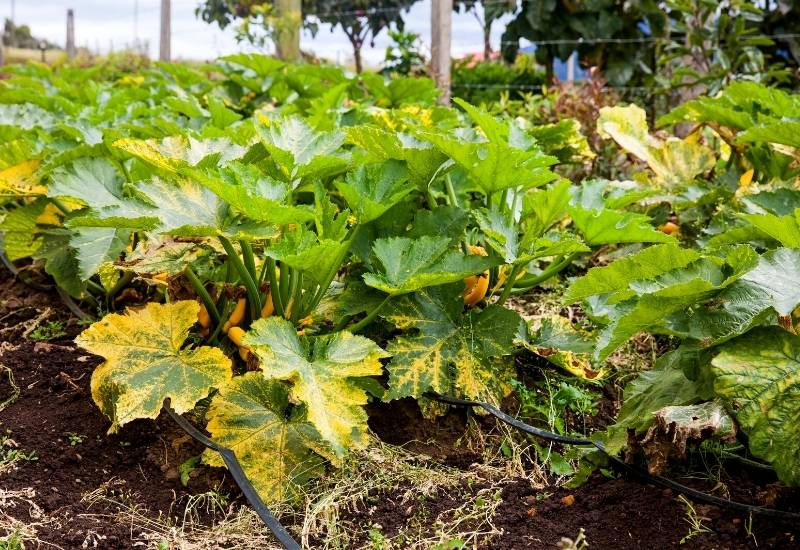
Soggy or Waterlogged Soil
Visibly wet or waterlogged soil is an obvious sign of overwatering in zucchini plants. The excessive moisture prevents the roots from receiving sufficient oxygen, which is essential for their health and function. This lack of oxygen can be exacerbated by compacted soil, which hampers drainage, causing water to pool around the roots. If the soil around your zucchini plants feels constantly saturated, it’s crucial to adjust your watering practices to prevent further damage.
Edema or Blistering
Edema, characterized by the presence of bumps or blisters on the leaves, is another sign of overwatering in zucchini plants. The excessive moisture in the leaves creates pressure within the cells, resulting in a water-soaked appearance and leaf distortion. This condition weakens the overall structure of the plant and increases its vulnerability to various diseases and pests. Monitoring for edema can help you identify if your zucchini plants are being overwatered.
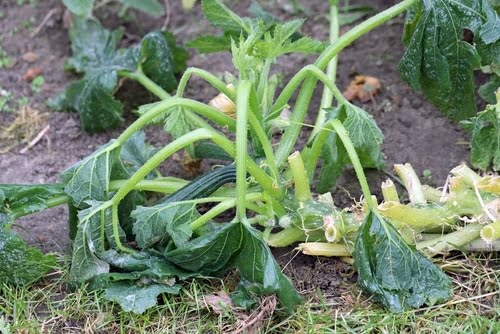
Wilting and Yellowing Flowers
In addition to the leaves, the flowers of overwatered zucchini plants may also exhibit wilting and yellowing. The excess moisture can impede pollination, leading to poor flower quality and eventual fruit production. The lack of suitable conditions for pollinators to visit the flowers, combined with the root damage caused by overwatering, can result in stunted or non-existent fruit development.
Poor Fruit Quality
Lastly, overwatering can significantly impact the quality of the zucchini fruit. Excessive moisture can lead to small or deformed fruit, as the plant’s resources are diverted toward managing the waterlogged conditions rather than proper fruit development. Furthermore, overwatered zucchini plants are more susceptible to blossom end rot, a condition where the bottom of the fruit becomes mushy or rots due to calcium deficiency. By recognizing poor fruit quality, you can adjust your watering routine and create better growing conditions for your zucchini plants.
In conclusion, being able to identify the signs of overwatering in zucchini plants is crucial for any gardener. By closely monitoring the health of your plants and addressing these signs promptly, you can prevent further damage and promote their overall well-being. Remember to adjust your watering practices accordingly, ensuring that your zucchini plants receive the right amount of moisture to thrive. With proper care, your zucchini plants will reward you with a bountiful harvest of delicious and healthy produce. Happy gardening!
